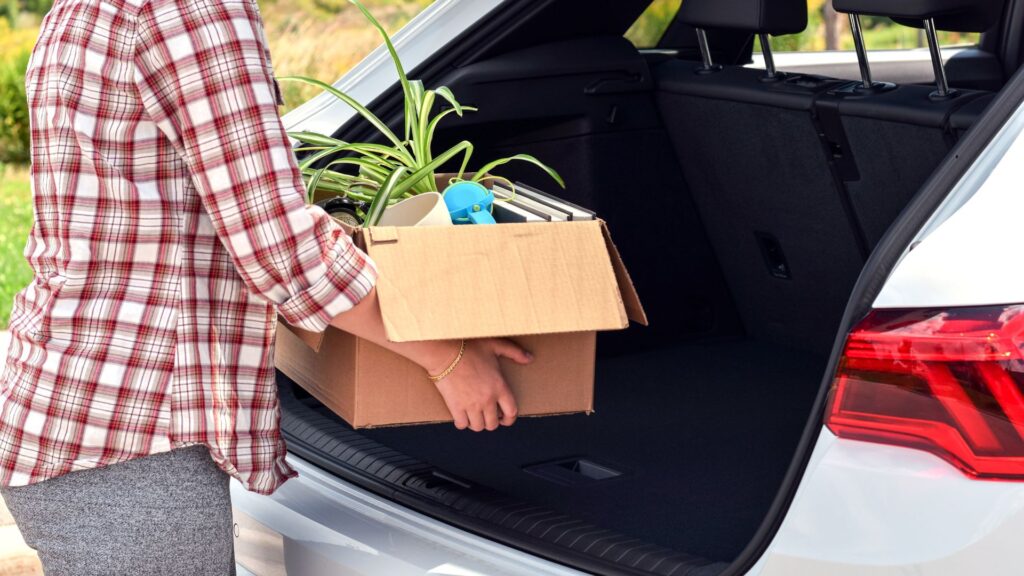How to Ship a Car with Personal Items Inside: What’s Allowed and What’s Not?

Shipping a car can be a convenient option when relocating, buying a vehicle from another state, or moving temporarily. However, many people wonder if they can leave personal items inside their car during transport. While some companies allow certain belongings to remain in the vehicle, strict regulations and safety concerns limit what can and cannot be transported.
Understanding the rules, potential risks, and best practices for shipping a car with personal items inside can help you avoid extra fees, damage, or delays. This guide covers what’s allowed, what’s not, and how to prepare your car for shipment safely.
Can You Ship a Car with Personal Items Inside?
The short answer is: It depends on the transport company and the shipping method.
Why Some Companies Restrict Personal Items in Vehicles
Weight Limitations – Car carriers have maximum weight limits regulated by transportation authorities. Extra weight from personal items may lead to overloading and additional fees.
Liability and Insurance Issues – Most auto transport companies do not insure personal items, meaning if they are lost, stolen, or damaged, you won’t be reimbursed.
Safety Concerns – Loose items inside the car can shift during transit, causing damage to the vehicle interior or becoming hazardous.
Customs and Legal Restrictions (For International Shipping) – If you are shipping a car overseas, many countries have strict regulations against transporting personal items inside the vehicle.
What Personal Items Are Allowed in a Shipped Car?
Some auto transport companies allow certain lightweight, non-valuable personal belongings to be shipped inside the car. These typically include:
- Small personal belongings (under 100 lbs total) – Some companies permit light items in the trunk.
- Spare tires and tools – Items that originally came with the car (e.g., a jack, wrench, or emergency kit).
- Factory-installed accessories – Items that are part of the car’s original setup (e.g., built-in GPS, seats, mats).
- Child car seats – If securely fastened, some companies allow child car seats to remain in the vehicle.
Tip: If allowed, place personal items in the trunk or below the seats to prevent movement during transit.
What Items Are NOT Allowed in a Shipped Car?
Most auto transport companies strictly prohibit shipping the following:
- Electronics & Valuables – Laptops, cameras, jewelry, and any other expensive items.
- Perishable Goods – Food, beverages, or anything that can spoil or attract pests.
- Hazardous Materials – Flammable liquids, explosives, firearms, and chemicals.
- Illegal or Restricted Items – Drugs, alcohol, and any contraband are strictly forbidden.
- Live Animals & Plants – No pets, plants, or any living organisms should be inside the vehicle.
- Loose Items That Can Move Around – Loose objects can cause damage to the car’s interior during transportation.
Important: Some companies will refuse to ship your car if they find unauthorized items inside. Always check your transporter’s policies beforehand.
How to Safely Pack Personal Items in a Shipped Car
If your auto transport company allows a few personal items, follow these steps to pack them safely and reduce risks:
1. Use the Trunk for Storage
If permitted, place allowed items in the trunk rather than the passenger seats to minimize visibility and prevent theft.
2. Secure Lightweight Items Under the Seats
If you must store something inside the vehicle, ensure it is lightweight and does not shift during transport.
3. Avoid Blocking Windows and Airbags
Placing items near windows, airbags, or the driver’s seat could pose a safety hazard and may be against transport regulations.
4. Remove Valuables and Important Documents
Before shipping, make sure to remove your registration, insurance papers, and any other important documents from the car.
5. Lock the Car (If Allowed by the Transporter)
Most carriers recommend leaving the car unlocked for inspection, but some allow you to lock it after pickup. Ask the transporter about their policy.
Shipping a Car with Personal Items: Open vs. Enclosed Transport
Your ability to ship personal items also depends on the type of transport you choose:
1. Open Transport (Less Secure, More Affordable)
- Most common and budget-friendly option
- More exposed to weather, theft, and damage
- Limited personal item allowance (if any)
2. Enclosed Transport (More Secure, More Expensive)
- Provides protection from weather and theft
- Often used for luxury, classic, or high-value cars
- More likely to allow a few personal belongings inside the vehicle
Recommendation: If carrying personal items is essential, consider enclosed transport for added security.
Additional Costs and Risks of Shipping Personal Items
If you decide to ship personal belongings in your car, consider the possible risks and extra costs:
- Extra Fees for Overweight Vehicles – Many carriers charge a penalty for exceeding weight limits.
- Potential Delays in Shipping – If the transport company needs to inspect or remove items, it can slow down the process.
- Higher Risk of Theft or Damage – Items inside the car are not covered by the carrier’s insurance, and if stolen or damaged, you are responsible for the loss.
Best Practice: Minimize personal belongings inside the car to avoid additional costs, risks, and possible transport refusal.
Final Preparation Before Shipping Your Car
Checklist for a Smooth Auto Transport Process
- Clean the interior and remove all personal belongings except allowed items.
- Take photos of your car from multiple angles for documentation.
- Check fluid levels and battery charge (avoid a full gas tank to reduce weight).
- Disable alarms and remove toll tags to prevent unexpected charges.
- Confirm policies with your transport company about personal items and security.
Pro Tip: A minimalistic approach to shipping your car reduces risks, potential fees, and ensures a hassle-free experience.
Conclusion
Shipping a car with personal items inside is possible but comes with restrictions, risks, and potential extra costs. Most transport companies allow minimal items, typically stored in the trunk or secured under seats, while prohibiting valuables, hazardous materials, and unsecured objects.
To ensure a smooth shipping experience:
- Check transport company policies before placing any personal belongings in your car.
- Pack only permitted items securely and avoid unnecessary risks.
- Consider enclosed transport for added security if personal items must be shipped inside the vehicle.
By following these guidelines, you can safely transport your vehicle while avoiding complications related to personal item restrictions.
Latest articles

5 min read
Preparing Your Vehicle for Cross-Country Shipping
Shipping your car across the country requires more than just booking a transport service—it deman...

5 min read
The Role of Auto Transport Brokers vs. Carriers
When it comes to shipping a car, understanding the roles of auto transport brokers and carriers i...

5 min read
How to Choose Between Open and Enclosed Auto Transport
When shipping a car, one of the most critical decisions is choosing between open and enclosed aut...